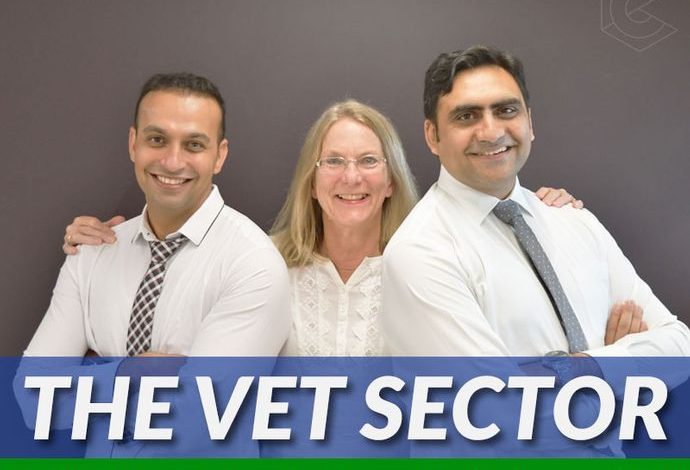Annual declaration on compliance
Have you submitted your Annual Declaration on Compliance?
Are you confident that your RTO meets current compliance requirements with RTO standards? Or do you need help?
All Australian Registered Training Organisations (RTOs) are required to submit an annual declaration on compliance with the RTO standards applicable to their organisation on or before 31st March 2018.
The CEO Declaration
The declaration is a legal document and the CEO must be truthful and completely open and transparent in making the declaration. The CEO is making the declaration to ensure that the RTO complies with all requirements of the VET Quality Framework as relevant to the training products on the RTO’s scope. There are a number of penalties under the National Vocational Education and Training Regulator Act 2011 that all CEOs should be aware of.
https://www.legislation.gov.au/Details/C2017C00245
Failure to submit this annual declaration is a breach of conditions of registration as an RTO.
Annual declaration requirements
An annual declaration confirms the CEO has systematically monitored the RTO’s compliance with the Standards and whether any issues identified they have been rectified or otherwise appropriately risk-managed. The declaration must be signed by the RTO’s Chief Executive Officer (CEO), who is responsible for the RTO’s operations.
The declaration requires the CEO to testify that:
-
all information about the RTO on training.gov.au is accurate (or, if it is inaccurate, that ASQA has been notified of necessary changes
-
to the best of the CEO’s knowledge, all owners and high managerial agents meet the Fit and Proper Person Requirements.
Demonstrating compliance includes, but is not limited to, showing how the RTO complies with (if applicable):
-
the NVR Act and the legislative instruments it enables
-
the VET Quality Framework
-
legislation, regulations and standards related to delivery of training to overseas students
-
VET Student Loans legislation and rules
-
workplace health and safety legislation and regulations
-
anti-discrimination legislation and regulations
-
consumer protection requirements
The CEO needs to ensure that the RTO currently complies with each national standard and if not, what actions are being taken to remedy non-compliance, especially but not limited to, the following compliance areas:
1. Training and assessment strategies
The RTO has a compliant Training and Assessment Strategy (TAS) for each course delivery type (such as online, classroom, workplace, distance, blended) and cohort of student (domestic, International).
2. Industry consultation
The RTO has conducted a ‘range of Industry consultations’ and systematically used the outcome of the Industry engagement to ensure the Industry relevance of the training and assessment strategies, practices and resources and current industry skills of the trainers and assessors.
3. Trainers and assessors
The RTO has sufficient trainers to deliver each training product on the scope. The trainers/assessors have demonstrated their vocational competency and Industry currency at each unit level and meet VET knowledge and currency requirements. The trainer and assessor files contain signed copies of their annually updated resumes, certified qualifications and skills matrixes.
4. Pre-enrolment information
Information, whether disseminated directly by the RTO or on its behalf, is both accurate and factual and provides students with sufficient information to make an informed decision to enrol in the course with your RTO.
5. Validation schedule
The RTO has implemented a plan for ongoing systematic validation of assessment practices and judgements for each training product on the RTO’s scope of registration including;
-
when assessment validation will occur;
-
which training products will be the focus of the validation;
-
who will lead and participate in validation activities;
-
how the outcomes of these activities will be documented and acted upon.
As per ASQA’s Standards for RTOs 2015, the RTO’s validation plan must ensure that:
-
All training product on the RTO’s scope of registration undergoes validation at least once every five years.
-
The RTO must validate at least 50 per cent of the training products in the first three years of the cycle.
You may need to validate certain training products more often where specific risks have been identified, for example, if your RTO’s industry consultation identifies areas of particular risk. ASQA may from time to time determine specific training products that must have particular attention paid to them and this advice is published to www.asqa.gov.au.
You can read more about validation schedule and conducting validation at https://www.caqa.com.au/validation-and-moderation-services.
6. Training and assessment materials
The RTO has sufficient, industry-relevant, compliant resources and materials to train and assess all training products on your RTO’s scope. The training and assessment materials meet the training package requirements and Industry expectations.
7. Language, literacy and numeracy and support requirements
The RTO can demonstrate how it identifies language, literacy, numeracy and learning requirements for each and every student in every course and how the RTO will provide adequate support for them.
8. Transition planning
The RTO has prepared a compliant transition plan to demonstrate that:
-
the commencement of a new learner in a training product which is no longer current (i.e. the training product has been superseded, removed or deleted from the National Register); and
-
the time-frame in which an RTO must complete the training, assessment and AQF certification documentation issuance for learners enrolled in a training product which is, or becomes, no longer current.
9. RTO Policies and Procedures, Forms and Manuals, Records management system and Practices
The RTO has compliant policies, procedures, forms, manuals, records management systems for effective retrieval, retention and protection of records, complaints management, regulatory compliance, minimising litigation risks, safeguarding important information, better management decision making, version control and RTO practices to ensure the organisation follow a compliant framework to maintain its registration with the regulatory bodies.
10. AVETMISS compliant database
The RTO has collected and reported ‘Total VET Activity’ data. This includes full Australian Vocational Education and Training Management Information Statistical Standard (AVETMISS) data, in accordance with the National VET Provider Collection Data Requirements Policy.
11. Compliant testamurs, statement of attainment and record of results
The RTO must ensure it is issuing compliant testamurs, statement of attainment and record of results to all eligible students
12. Collection and reporting of Quality Indicators and Total VET activity data
The Data Provision Requirements 2012 requires all registered training organisations (RTOs) registered with ASQA to provide an annual summary report of their performance against the learner engagement and employer satisfaction quality indicators to ASQA. You must also make sure, your organisation has recording and reporting Total VET activity data according to the requirements of NCVER and regulatory bodies. Your RTO is required to meet these data provision requirements as a condition of registration. Regulatory body may impose regulatory penalties if your RTO does not meet these data provision requirements.
Still confused? GET A FREE CONSULTATION
GET A FREE CONSULTATION
Format and requirements for making an annual declaration with each of the three Australian VET Regulators
The requirements and format of the declaration are slightly different and vary between each of the three Australian VET Regulators:
-
The Australian Skills Quality Authority (ASQA)
-
Victorian Registration and Qualifications Authority (VRQA – VIC based RTOs)
-
Training Accreditation Council (TAC – WA based RTOs)
Conduct an Internal audit
During the RTO’s registration period, the RTO must remain compliant at all times. We recommend completing an independent internal audit of an RTO at least on an annual basis to understand how healthy and compliant the RTO is. This will help you tremendously when you are in the process completing the annual declaration on compliance.
FREE CONSULTATION OFFER
We are providing free consultation with our VET and Industry experts to answer and assist you with all/any questions you may have regarding CEO Declaration of Compliance.
GET A FREE CONSULTATION
Retainer services
We also provide “retainer services” to organisations to look after their compliance and quality assurance requirements. Our VET experts can visit your premises to work ‘in house’ and develop systems and strategies to support your RTO’s compliance requirements.
Our Consultants
Sukh Sandhu
has worked as a as “Chief Operating Officer” for an International College, as the National Compliance Manager for the RTO arm of the Australian Catholic University and several other RTOs, TAFEs and Universities and the Australian Skills Quality Authority (ASQA) over a 20+ year career in VET and Higher Education. Sukh has strong skills in ASQA/ VRQA compliance standards, ANMAC, AHPRA, CRICOS, ESOS, ISO compliance audits. Sukh is member of several independent professional development organisations and Government bodies including ACPET, VELG, ACS, AITD, MARA, MIA, APEX, IEEE, The Internet Society (Global Member), AISIP, IAMOT, ACM, OISV, APACALL, IWA, Eta Kappa Nu, EDSIG, and many others.
Anna Haranas
has 35+ years of management experience in the Education and Training, Early Childhood Education and Care (ECEC), Hospitality, Retail and Allied Health Industries. She has managed several RTOs, managed apprenticeship services and participated in a number of regulatory audits by Federal and State regulatory bodies. She has been responsible for planning, directing, leading and managing strategic and long-range goals of many organisations. She has strong skills with managing effective networks, enhance relationships, develop, direct and control the strategic and operational planning frameworks and planning outcomes for organisations in the short, medium and long term; and understands and responds appropriately to emerging trends, expansion opportunities, competitive threats, viability of outside business partners, and internal business process improvement.
Raj Kiran
has extensive experience in the Education and Training and Nursing fields. She has worked as a lecturer for 5+ years and have taught Bachelor of Nursing Students. Raj has worked in a variety of different clinical environments, gaining invaluable clinical and management experience in Critical Care/ ICU and as a registered nurse. She has developed training and assessment resources for a number of training packages, including First Aid, Nursing, Health Support Services, Hospital/Health Services Pharmacy Support, Health Administration, Ambulance Communications (Dispatch), Individual support, Disability support, Dementia, Mental Health, Community Services and Occupational English Test: OET for a number of organisations.
Our team also consists of a number of VET consultants and Industry experts covering a wide range of industries.
Legislative and regulatory requirements
Clauses 2.1 and 8.4 to 8.6—Compliance and reporting
Clause 2.1
The RTO ensures it complies with these Standards at all times, including where services are being delivered on its behalf. This applies to all operations of an RTO within its scope of registration.
Clause 8.4
The RTO provides an annual declaration on compliance with these Standards to the VET [vocational education and training] regulator and in particular whether it:
-
a) currently meets the requirements of the Standards across all its scope of registration and has met the requirements of the Standards for all AQF [Australian Qualifications Framework] certification documentation it has issued in the previous 12 months
-
b) has training and assessment strategies and practices in place that ensure that all current and prospective learners will be trained and assessed in accordance with the requirements of the Standards.
Clause 8.5
The RTO complies with Commonwealth, state and territory legislation and regulatory requirements relevant to its operations.
Clause 8.6
The RTO ensures its staff and clients are informed of any changes to legislative and regulatory requirements that affect the services delivered.













